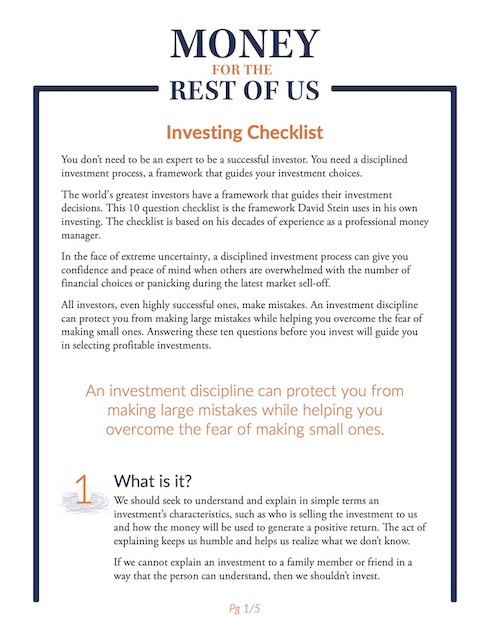Japan’s stock market recently exceeded the all-time high first set in December 1989. That’s 34 years of zero price appreciation for the stock market. What drove this lackluster performance, will it continue, and what can we learn from it?

Topics covered include:
- How big was Japan’s stock bubble, and how much did it contribute to the stock market’s underperformance over the past three decades
- How do Japan’s demographic trends impact its economic challenges, and what are the solutions
- Why Japan’s houses are built to depreciate in value
- What lessons can we learn from Japan’s extended bear market
Show Notes
Japan’s Nikkei 225 index eclipses record high after 34 years by Leo Lewis—The Financial Times
Episode Sponsors
Monarch Money – Get an extended 30-day free trial
Related Episodes
235: What If Home Prices Always Declined
178: Japan and the Impact of A Shrinking Population
38 Plus: Time Wealth and Japan
Transcript
Welcome to Money for the Rest of Us. This is a personal finance show on money, how it works, how to invest it, and how to live without worrying about it. I’m your host, David Stein. Today is episode 468. It’s titled “Lessons From Japan’s 34-year Stock Bear Market.”
Japan’s Stock Market Exceeds Its All Time High
Last week, the Nikkei 225 index in Japan broke through its peak after 34 years. It reached its high in December 1989. And since then, the price return of the index has been essentially zero. There have been some dividends over that 34-year period. Through the end of January, the MSCI Japan index returned 1.1% annualized. All of that return was from dividends. We can compare that to the US stock market, which returned 9.6% annualized over that same 34-year period.
Bruce Kirk, who is Chief Japan equity strategist at Goldman Sachs, says “It’s an incredibly important barrier for Japan to have finally broken through. For the last 30+ years, Japan has been persistently framed in relation to that December 1989 bubble era Nikkei all time high. No matter how well it has done since the market finally bottomed, their narrative has always been tempered with an element of skepticism that references the high watermark.”
If we look at Japan back in 1989, the stock market made up 37.5% of global stock market capitalization. But by the end of 2022, it was 6.3%. Compare that to the US—it now makes up 58% of the global stock market. There are some things that we can learn from this 34-year—we’ll call it a bear market, but a bear market is an extended down period, and the Japanese stock market is definitely in an uptrend. It’s up 17.5% this year alone.
But if we think about this just extended 34-year of underperformance never exceeding that 1989 high, that is an incredibly long wait. And there’s some reasons for that, and there’s some things that we can learn. And in this episode, we’re going to play a portion of four different episodes. This is a super-episode on Japan. I have covered Japan numerous times on the show. I have visited the country four times. I’m going back in May for the first time since late 2018, early 2019. But we want to share what it is about Japan that’s unique but also has led to this challenging market environment for 34 years.
Japanese Stock Market Performance Attribution
First, let’s deconstruct these long-term returns for Japan compared to the US. Japan returned 1.1% annualized, the US stock market returned 9.6% annualized. The dividend yield contribution over that timeframe is around 1.2% to 1.5% for both Japan and the US. Earnings in the US have grown faster over that 34-year period compared to Japan.
On an earnings per share basis, the earnings per share growth rate for the US stock market as measured by the MSCI USA index has been 6.2% annualized, versus 3.1% for the MSCI Japan index. Earnings have grown twice as fast in the US, and that’s due to better demographics, more a growth in the US workforce, and productivity improvements; greater use of technology to produce more, with less.
Now, over that 34-year period the Japanese stock market would have earned over 4% annualized, including earnings growth and dividend yield, except for the bubble. And it clearly was a bubble in 1989. The price-to-earnings ratio, what investors were willing to pay for dollar’s worth of stocks back in 1989 was 51.9. Now it’s 17 times earnings. That costs the Japanese stock market 3.1% annualized. A 3.1% drag due to valuations being very high, and then slowly over the years declining.
If we compare that to the US stock market, back in 1989 it had a price-to-earnings ratio of 14.1. Much, much cheaper than Japan. Now the US stock market, as measured by the MSCI USA index—which is comparable to the S&P 500—is 25.4. So more expensive than average, and that increase in the P/E ratio contributed 1.7% annualized to that 9.6% annualized return for the US stock market. Without that, the US stock market would have returned closer to 8% annualized.
So now we’re in a position where Japan’s stocks are relatively inexpensive. The cyclically-adjusted price-to-earnings ratio, which is the P/E based on inflation adjusted earnings over the past decade—it’s 15.9 in Japan, versus 30.2 for the US stock market. Will the US continue to outperform the Japanese stock market going forward?
Well, we’ll see in this episode, there’s definitely some things in the US’es favor in terms of productivity, in terms of demographics. But that doesn’t mean Japan can’t change. They could bring in more immigrants. Their culture could change, and it is changing, for women to stay in the workforce for longer. More productivity improvements, greater use of technology and innovation. Those things can help Japan and any other country.
So let me share with you some remastered segments of episodes from Money for the Rest of Us and our premium podcast, Money for the Rest of Us Plus. The first episode I’ll share is Plus Episode 38, from January 2015, followed by Plus Episode 73, September 2015, Episode 178, from October 2017, and then Episode 235 From January 2019. And these episodes share challenges in Japan, my experiences in visiting Japan, what’s unique about it, and after listening to that, I’ll follow up with some lessons that we can take away from those four episodes about Japan, and what we can learn from a 34-year bear market.
So with that, let’s go ahead and I’ll start with those two Plus episodes from 2015.
Plus Episode 38 Except on What Makes Japan Unique
I’ve been pretty fascinated with Japan the past really three or four years. Japan was throughout my college and graduate school—this was sort of ’80s to early ’90s, Japan was sort of held out as the model of corporate efficiency and how to grow an economy. And after World War Two and beginning in sort of the ’60s to the ’80s, Japan had some of the highest growth rates in the world.
It was effectively like China is today, or at least how China was five years ago. Accelerated growth, export-led growth. And so they were always sort of pointed out as very high-quality products, and I think the term is keiretsu, all the sort of corporate relationships between the different companies, and Japan was the model up until about 1990. And I remember working –
I had a temp job at a high tech firm, and one of the programmers there was really into buying call options on Japanese stocks. Call options are basically derivative securities, and you benefit when the stock price goes up. And he’d put a lot of money, because he’d made a lot of money, and he kept doubling down. And essentially, early 1990s, that year 1990, the stock market in Japan fell by half that year.
And I just remember how discouraged and frustrated he was, because he had lost all this money in options. And I don’t know how much he was investing in that, but that was sort of the beginning of what is known as the lost decade. And yet, when you use a term like lost decade, it’s a label, and it’s hard to just—you just can’t put labels on something like that.
As a Money For the Rest of Us Plus member, you are able to listen to the podcast in an ad-free format and have access to the written transcript for each week’s episode. For listeners with hearing or other impairments that would like access to transcripts please send an email to team@moneyfortherestofus.com Learn More About Plus Membership »
